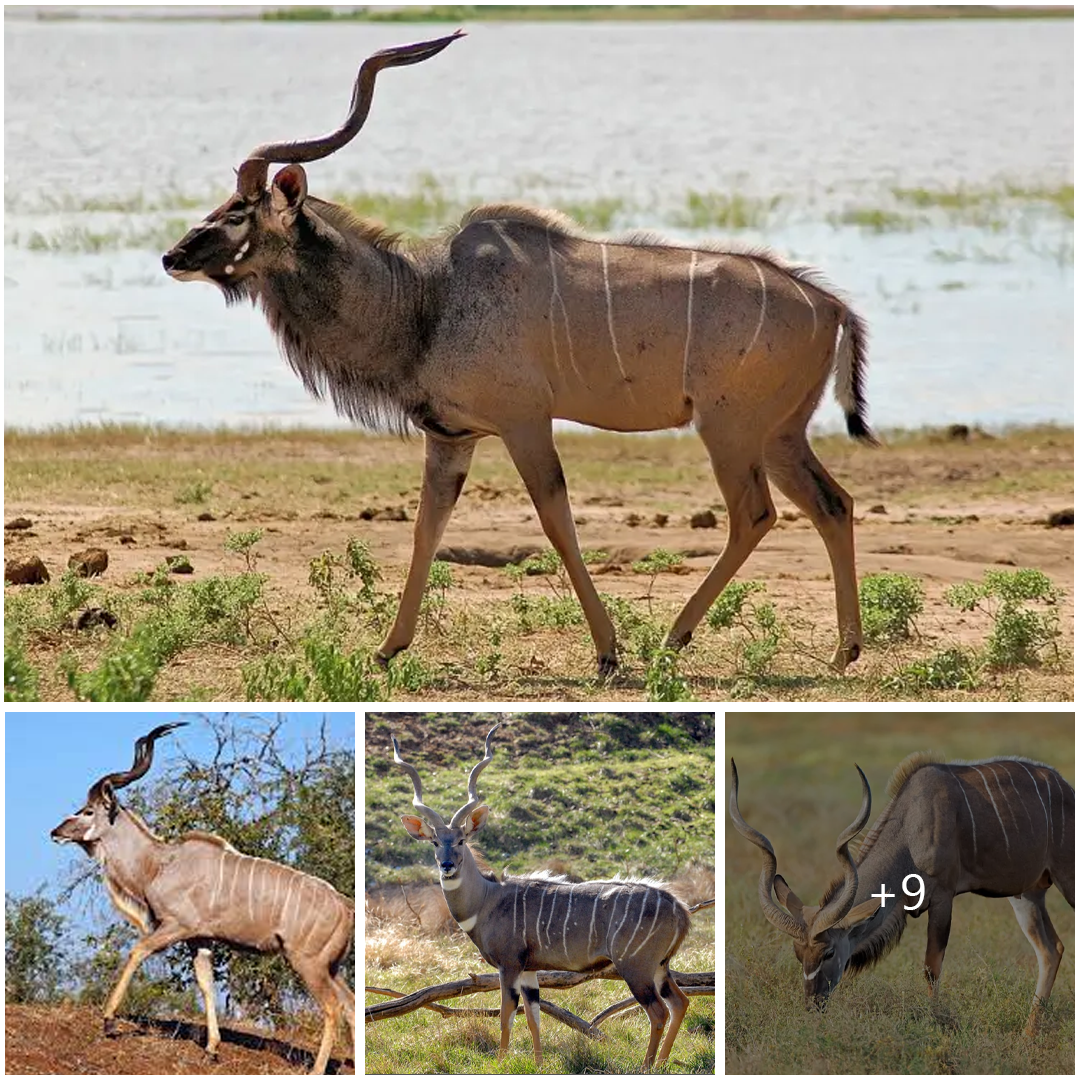
The Majestic Greater Kudu: A Symbol of African Wilderness
The Greater Kudu (Tragelaphus strepsiceros) stands as one of the most iconic and majestic antelope species found in the vast savannas and woodlands of Africa. With its striking appearance, impressive size, and remarkable adaptations, the Greater Kudu embodies the spirit of the African wilderness like few other animals can.
Physical Characteristics:
Characterized by its long, spiral horns, which can reach lengths of up to 1.8 meters (6 feet) in males, the Greater Kudu is instantly recognizable. These horns, adorned with distinctive twists and ridges, serve not only as a means of defense against predators but also as a display of dominance and strength during mating rituals.
In addition to their impressive horns, Greater Kudus possess a distinctive coat pattern, featuring bold white stripes running vertically along their reddish-brown fur. This cryptic coloration helps them blend seamlessly into their natural habitat, providing camouflage from potential predators such as lions, leopards, and hyenas
![Điểm Tin Kỷ Lục Thế Giới] Viện Kỷ Lục Châu Phi (P.54) - Đề Xuất Kỷ Lục - Linh dương Kudu: Loài linh dương có sừng dài nhất thế giới chỉ được](https://kyluc.vn/Userfiles/Upload/images/2712k.jpg) .
.
Habitat and Distribution:
Greater Kudus are primarily found in eastern and southern Africa, inhabiting a range of habitats including woodlands, savannas, and semi-arid regions. They are most commonly sighted in countries such as South Africa, Namibia, Botswana, Zimbabwe, and Tanzania, where suitable habitats and adequate food sources are abundant.
Behavior and Diet:
These graceful antelopes are predominantly browsers, feeding on a variety of leaves, shoots, fruits, and twigs from trees and shrubs. Their diet may vary depending on seasonal availability, with Greater Kudus displaying a remarkable ability to adapt to changing environmental conditions.
Despite their large size, Greater Kudus are generally shy and elusive animals, preferring to avoid confrontation with potential threats. They are known for their keen senses of hearing and smell, which they rely on to detect the presence of predators and other dangers in their surroundings.
Conservation Status:
While Greater Kudus are not currently considered endangered, they face various threats to their survival, including habitat loss, poaching, and competition with livestock for resources. Conservation efforts aimed at protecting their natural habitats and implementing sustainable wildlife management practices are essential for ensuring the long-term survival of this iconic species.
Conclusion:
In the vast and diverse landscapes of Africa, the Greater Kudu stands as a symbol of resilience, beauty, and adaptability. With its majestic horns, cryptic coloration, and graceful demeanor, this remarkable antelope continues to captivate the hearts and minds of all who encounter it, serving as a true ambassador for the untamed wilderness of the African continent.





